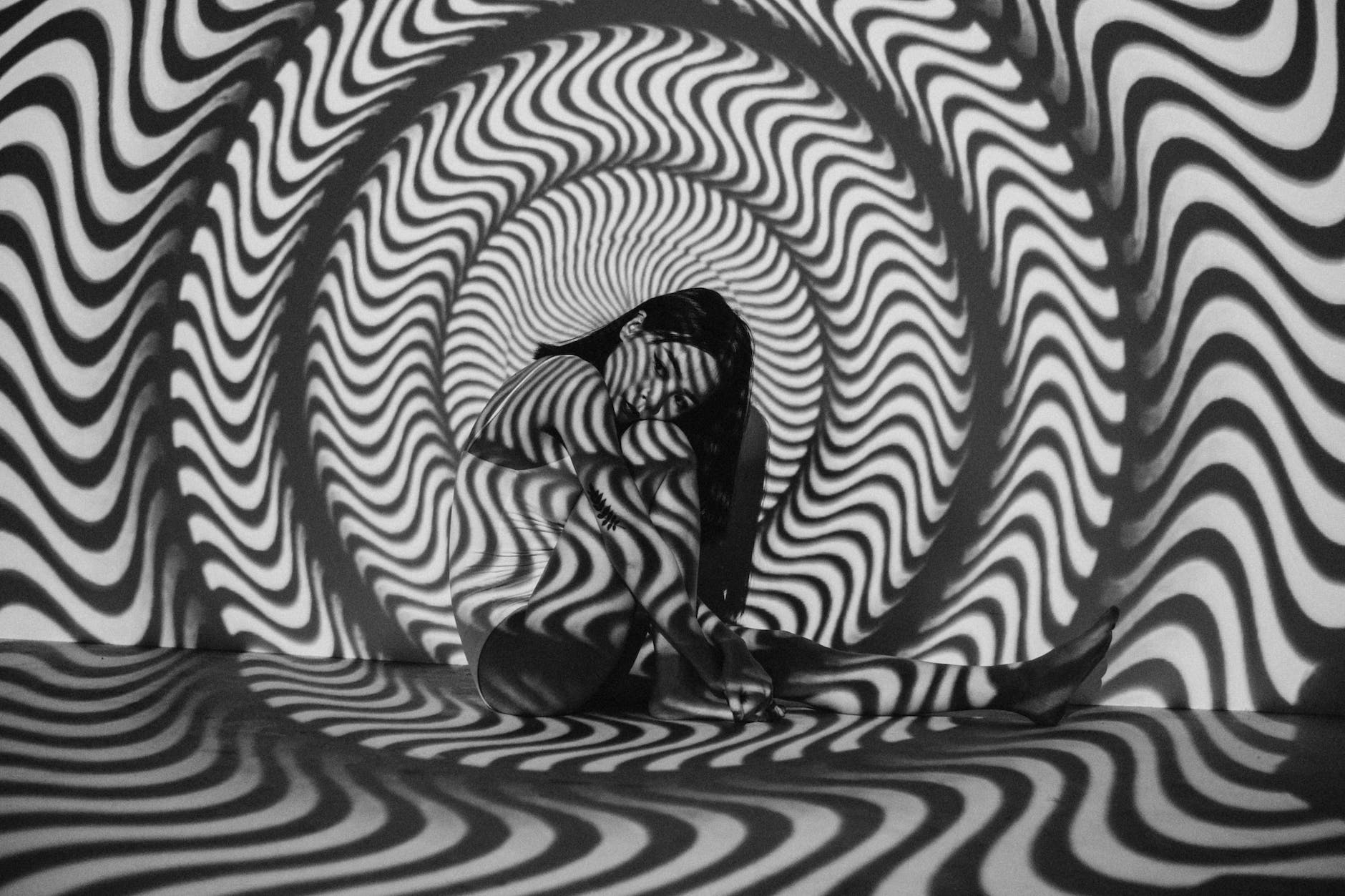The evolution of psychedelic art can be traced back to the counterculture movement of the 1960s. As the popularity of this cultural phenomenon grew, so too did its presence in music festivals, where it now plays an influential role in shaping the festival environment and experience. This article will explore the origins of psychedelic art and its impact on the modern-day music festival scene.
Early Beginnings: The Counterculture Movement
The counterculture movement of the 1960s was characterized by an exploration of alternative lifestyles, an embrace of Eastern spirituality, and a desire to create new forms of art that reflected these values. One of the most famous symbols of this era is the psychedelic poster, which often featured bold colors and intricate patterns to create a sense of otherworldliness. This type of artwork quickly became synonymous with the music of the time, as artists like The Beatles, The Grateful Dead, and Jimi Hendrix embraced the psychedelic aesthetic in their album covers and promotional materials.
From Concerts to Festivals: The Birth of a Psychedelic Tradition
The first music festivals to incorporate psychedelic art into their experience were the legendary concerts of the late 1960s, such as the Woodstock Music & Art Fair in 1969. These gatherings provided an opportunity for attendees to immerse themselves in a temporary community built around a shared love of music and psychedelic aesthetics. In addition to the visual aspects of this culture, music festivals also became an environment for the experimentation of mind-altering substances, which further enhanced the psychedelic experience.
As music festivals continued to gain popularity, psychedelic art became an essential element of the festival experience. Festivals like Glastonbury in the UK and Burning Man in the US became known for their immersive environments, often incorporating psychedelic visuals through large-scale installations, projections, and other creative displays.
The Modern-Day Psychedelic Renaissance: The Importance of Art in Festival Culture
In recent years, there has been a resurgence of interest in psychedelic culture and a renewed appreciation for the role that art plays in creating a transformative festival environment. As a result, music festivals have become platforms for contemporary artists to showcase new forms of psychedelic art and create immersive experiences that draw inspiration from the past while pushing the boundaries of what is possible.
One way in which the evolution of psychedelic art is visible at modern music festivals is through the use of cutting-edge technology to create innovative installations and interactive experiences. For example, at Lightning in a Bottle, a festival in California, artists use projection mapping to create incredible three-dimensional visuals on the surface of large installations, breathing new life into the psychedelic aesthetic. Similarly, the Electric Daisy Carnival in Las Vegas features multiple stages with intricate lighting designs and large LED screens, incorporating psychedelic visuals that create a captivating environment for festival-goers.
Another aspect of the evolution of psychedelic art in music festivals is the increasing emphasis on sustainability and the environment. Festivals like Boom in Portugal and Envision in Costa Rica are pioneers in this field, integrating principles of permaculture and eco-friendly practices into the planning and execution of the events. Psychedelic art at these festivals often reflects themes of nature, interconnectedness, and environmental stewardship, further enhancing the immersive experience and promoting a sense of unity and responsibility among attendees.
In Conclusion
The evolution of psychedelic art in music festivals is a testament to the enduring appeal of this artistic movement and its ability to adapt and grow with the times. From its beginnings in the counterculture movement of the 1960s to its current role as a driving force in the modern-day music festival scene, psychedelic art continues to play a vital role in creating immersive environments and fostering a sense of community at these events. As we look to the future, it is clear that the psychedelic art movement will continue to evolve and influence the way we experience music festivals, reminding us of the transformative power of artistic expression and the importance of nurturing our connection to the world around us.





